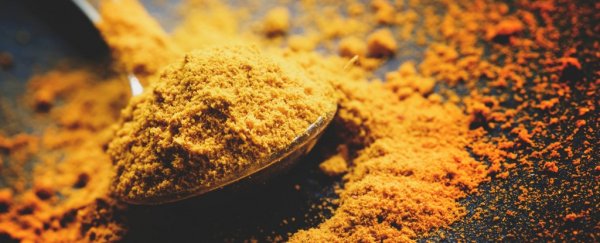A yellow pigment used to enhance the bright colour of turmeric is posing a direct threat to public health, according to a new study.
For years, it's been clear that lead exposure among women and children in rural Bangladesh is dangerously high. In some regions, up to half of all residents have shown elevated levels of this neurotoxin in their blood.
Since 2014, researchers at Stanford University have been trying to figure out why; now, the team's newest findings suggest a shocking twist - the country's most popular spice is at least partly to blame.
Analysing soil samples and gathering interviews with farmers and spice makers, researchers have found lead levels in turmeric that exceed national limits by up to 500 fold.
"We went into this thinking that perhaps there's sources of lead in the environment. Maybe it's the soil or the water. Maybe from lead soldered pipes," explains Jenna Forsyth, who researches child health in low-income countries in a recent video from Stanford.
"When you see that it's actually lead that's being added to the food. It's added directly to something that's being consumed. That was just shocking."
In Bangladesh, turmeric is ubiquitous; in many cases, it's in foods that are eaten every day. Yet despite its widespread consumption, this spice has not been extensively examined as a source of lead exposure in South Asia.
Previous research on lead poisoning has implicated turmeric before, but after five years of extensive research, the Stanford team now claims to have directly linked the lead in turmeric to lead levels in blood.
To achieve this, the team from Stanford visited the top nine districts for turmeric production in Bangladesh, as well as two districts that produce relatively little of the spice.
In each location, the researchers conducted interviews with people who produce, consume and regulate turmeric - a total of 154 conversations, right across the supply chain. What's more, the researchers also collected samples of turmeric, pigments, dust, and soil from both wholesale and retail markets.
In 7 out of the 9 districts, the researchers found turmeric contaminated by lead-based yellow pigment. But the best evidence of contamination was their isotope analysis - which is sort-of like a chemical fingerprint. The lead isotope they discovered in turmeric matched the lead isotopes found in the people's bloodwork.
"We recommend immediate intervention that engages turmeric producers and consumers to address this public health crisis and ensure a future with [lead]-free turmeric," the authors write.
Lead in any amount is known to be toxic to the brain and the body, lowering IQ and disrupting normal development, especially among children. A previous study, published in 2018 by the same Stanford team revealed that among 430 pregnant women in rural Bangladesh, more than 30 percent had elevated levels of lead in their blood.
"If you had children or pregnant women in the US with these levels, there would be an uproar," said Stanford researcher Stephen Luby at the time.
For now, there's no evidence that adulterated turmeric is reaching consumers outside of Bangladesh, but it's also important to remember that humanity shares a global food supply.
Since 2011, more than a dozen brands of this spice, exported by Bangladesh and India, have been recalled due excessive lead concentrations. The consequences of a contaminated batch slipping through the cracks could be serious.
"The current system of periodic food safety checks may catch only a fraction of the adulterated turmeric being traded worldwide," the authors argue.
Regardless of where it is happening, this level of contamination is downright dangerous, and consumers and processors in Bangladesh need to be aware that these pigments can have deleterious and potentially fatal consequences, especially for women and children.
"People are unknowingly consuming something that could cause major health issues," says Forsyth.
"We know adulterated turmeric is a source of lead exposure, and we have to do something about it."
The findings were published in Environmental Research.
